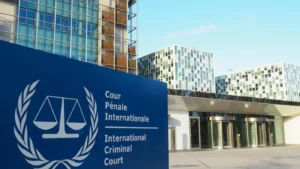One third of Pakistan underwater, floods threaten to create secondary disasters

Floodwaters have threatened to create secondary disasters in Pakistan.
According to satellite images from the European Space Agency (ESA), more than one third of the country is underwater.
It was reported that food is in short supply after water covered millions of acres of crops and wiped out hundreds of thousands of livestock.
Aid agencies have warned of an uptick in infectious diseases, leaving millions vulnerable to illness caused by what the United Nations has called a “monsoon on steroids.”
More than 1,100 people have died from the floods since mid-June, nearly 400 of them children, while millions have been displaced, according to Pakistan’s National Disaster Management Authority (NDMA).
Pakistan, which was already grappling with political and economic turmoil, has been thrown into the front line of the human-induced climate crisis.
Pakistan’s monsoon season usually brings heavy downpours, but this year’s has been the wettest since records began in 1961, according to the Pakistan Meteorological Department
Torrential monsoon rainfall — 10 times heavier than usual— has caused the Indus River to overflow, effectively creating a long lake, tens of kilometers wide, according to images from the ESA on August 30.
In the southern Sindh and Balochistan provinces, rainfall has been 500% above average as of August 30, according to the NDMA, engulfing entire villages and farmland, razing buildings and wiping out crops.
Pakistan is responsible for less than 1% of the world’s planet-warming gases, European Union data shows, yet it is the eighth most vulnerable nation to the climate crisis, according to the Global Climate Risk Index.
The WHO has also classified Pakistan’s worst floods on record as an emergency of “the highest level,” warning of a rapid spread of disease due to the lack of access to medical assistance.
WHO chief Tedros Adhanom Ghebreyesus on August 31 warned of new outbreaks of diarrheal diseases, skin infections, respiratory tract infections, malaria and dengue in the aftermath of the floods, while a litany of waterborne diseases also posed health risks.
What is being done?
The United Nations has launched a $160 million appeal aiming to reach 5.2 million of the most vulnerable people in the country, while the WHO also released $10 million to treat the injured, deliver supplies to health facilities, and prevent the spread of infectious diseases.
Two Chinese military planes carrying tents and other flood aid landed in Karachi on August 30, according to the Consul General of China to Karachi. China has pledged $14.5 million in aid to Pakistan, while the UK government also announced a contribution of 1.5 million pounds ($1.73 million) for relief efforts.
Prime Minister Sharif told CNN on August 30 the country was in talks with Moscow over importing wheat without breaching Western sanctions imposed over Russia’s invasion of Ukraine.
Sharif said that while Pakistan had secured 1 million metric tons of wheat amid the global shortage, the country will now need more due to the impact of the floods on the agriculture sector — which accounts for almost 40% of employment, according to World Bank data.








